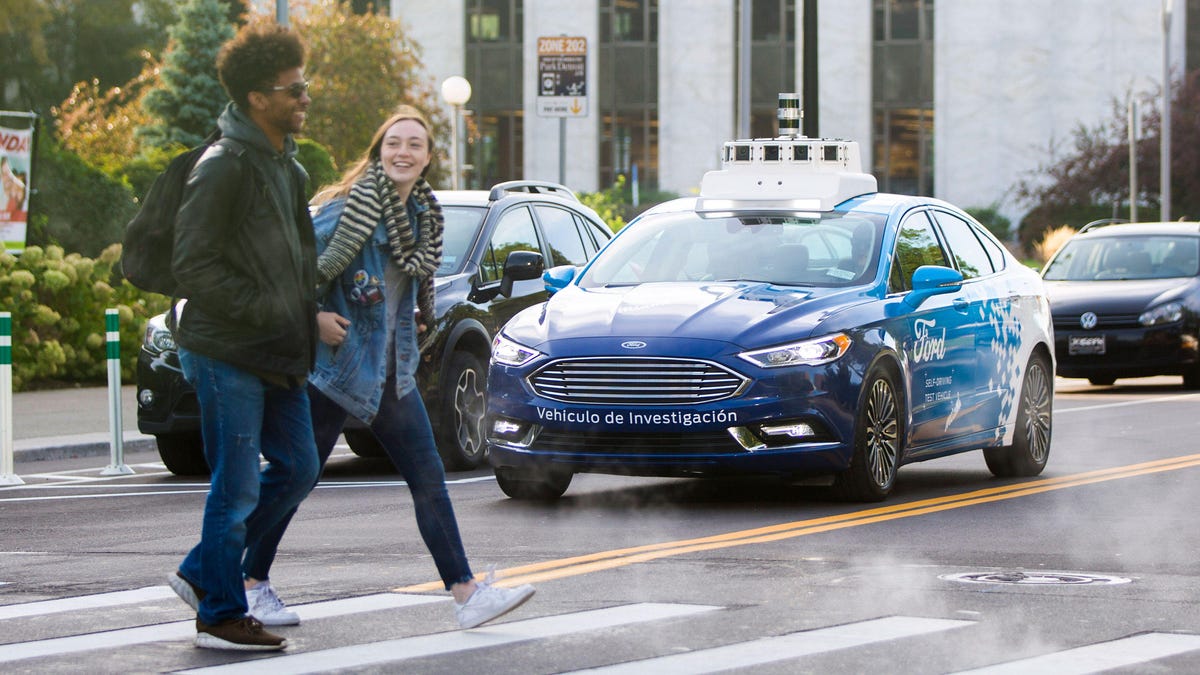Ford shares proposed standard for autonomous cars to signal intentions
Flashing lights would help self-driving vehicles "talk" to pedestrians, cyclists and other drivers.

Autonomous-car engineers are working hard to make sure that their self-driving vehicles avoid other road users. The next step is to ease those interactions by having self-driving vehicles signal their intentions to pedestrians, cyclists and human drivers. Now Ford has revealed its proposed standard for just that, with a series of flashing lights that signal "intent."
In a blog post on Tuesday, Ford said that other road users shouldn't be expected to change their behavior around autonomous vehicles. But the company believes that any Level 4 autonomous vehicle -- that's one that operates in certain situations without a human driver needing to take control -- should "communicate intent." As a result, Ford wants to develop a standard for all autonomous cars to use.
A special light bar helps this prototype autonomous vehicle signal its intentions to others.
Ford's proposed standard would have autonomous cars use the following signal lights: two white lights moving side-to-side would signal the car is yielding and is about to stop. A solid white light would signal the vehicle is driving autonomously. And rapidly blinking white lights would serve as a "start-to-go" warning before the car accelerates. These were tested in the real-world study as well as in virtual-reality simulations.
Going forward, Ford plans to install these intention-signalling lights on autonomous vehicles operated with Argo AI in Florida, as well as on test vehicles in Europe. And the automaker wants to work with the International Organization of Standardization and the Society of Automotive Engineers to "create a unified communication interface for self-driving vehicles."
Under this sheet is a fully self-driving car that Ford hopes to launch in 2021.
The idea comes out of a research project conducted where Ford observed the behavior of drivers and pedestrians around a vehicle with a "hidden" driver designed to simulate a self-driving car. The goal was to see how people reacted to a car without a human at the controls.
Ford has said it plans to launch a self-driving vehicle by 2021. It'll be a completely autonomous vehicle without traditional pedals or a steering wheel. But Ford doesn't plan to sell the vehicle to consumers -- rather, it'll operate as a ride-hailing vehicle that you can summon to transport you from one place to another.
Other companies are also investigating how to make sure self-driving cars can communicate with the world around them. Volvo's 360c concept, for instance, will use lights and sounds to cue pedestrians and drivers as to its intended direction.
Supplier Mobileye, meanwhile, is developing software called Responsibility-Sensitive Safety that would determine how aggressively an autonomous vehicle might drive. In a demo in Israel, for instance, a prototype car nudged its way into busy traffic while signaling. The idea: A self-driving car needs to be bold at times to keep pace with -- or inject itself into -- busy human-driven traffic.

